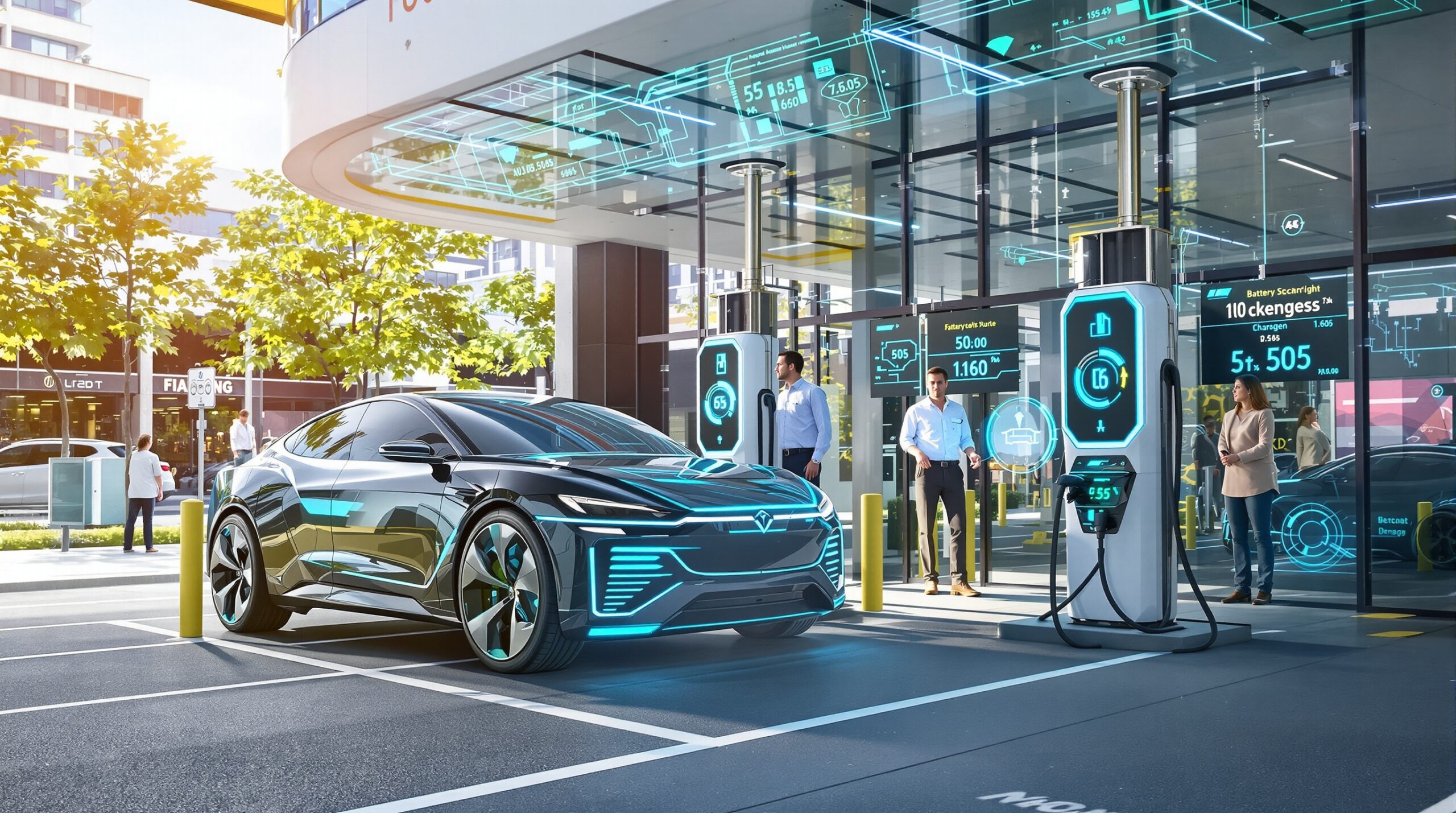A revolutionary advancement in battery technology is set to accelerate the transition toward electric vehicles (EVs). This breakthrough enables faster charging times, improved energy density, and greater safety. As EV adoption increases, addressing the challenge of lengthy charging times is critical. Researchers have now developed a novel battery design that can significantly reduce charging duration, bringing convenience and practicality to electric car ownership.
The Current Bottleneck in EV Charging
Charging speed remains a major concern for both manufacturers and consumers of EVs. While advancements in charging stations and infrastructure have occurred, battery limitations persist. Standard lithium-ion batteries, commonly found in today’s EVs, take between 30 minutes and several hours to recharge, depending on the model and charging equipment. These wait times pose a significant obstacle for users accustomed to the quick refueling of traditional gasoline vehicles.
The conventional battery structure is partly responsible for this bottleneck. Lithium-ion batteries pack energy by moving ions between the anode and cathode materials. Rapid charging introduces risks, including overheating, reduced battery lifespan, and even potential fire hazards. To balance safety and efficiency, charging speeds are often limited, resulting in longer waiting periods for vehicle owners.
Introducing the New Battery Design
Scientists have now unveiled a completely redesigned battery composition that radically improves charge speed. The heart of the innovation lies in the use of novel materials that bypass key limitations of traditional lithium-ion cells. Through a combination of advanced nanotechnology and improved electrode engineering, this new battery structure allows for remarkably faster ion movement.
The team behind this development focused on replacing standard graphite anodes with proprietary silicon-based composites. Silicon’s superior capacity to store lithium ions offers much higher energy density. By integrating nanostructured forms of silicon, the battery can absorb ions much faster, slashing the time required to fully charge an EV.
How the Technology Works
Traditional graphite electrodes face problems with ion mobility when heavily charged. Silicon materials, in nano-engineered configurations, present much lower resistance to the influx of lithium ions. This provides enhanced performance without compromising on safety or capacity.
The silicon-based anode not only delivers faster charging but also maintains structural integrity over repeated cycles. Advanced binding agents and protective coatings prevent degradation, a common issue with pure silicon. The result is an electrode that handles stress better and prolongs overall battery life, ensuring both speed and longevity.
Performance Benchmarks and Testing
Laboratory tests show unprecedented charging improvements using this technology. One test reported an 80% charge achieved within 10 minutes, compared to 30-40 minutes with current batteries. Fast-charging does not generate excessive heat, indicating robust thermal management and enhanced safety standards.
Additionally, the battery exhibited minimal capacity loss across 1,000 charge cycles. This is a significant step forward since most fast-charging solutions historically cause accelerated degradation. The maintenance of battery health under these demanding conditions proves the material’s durability and practical application potential.
Impact on Electric Vehicle Adoption
This breakthrough is expected to influence EV perceptions and accelerate market growth. Shorter charging times erase a key barrier for potential buyers. Drivers who once hesitated because of inconvenient wait periods now have new motivation to choose an EV over a gasoline-powered car.
Automotive manufacturers have already expressed strong interest in the technology’s scalability and integration. Leading brands are collaborating with battery startups and researchers to test early prototypes. Many believe that rapid advancements in battery technology will be a decisive factor in achieving full-scale electrification of transport.
Environmental Benefits
Decreased charging times can encourage even greater EV use, leading to a decrease in fossil fuel consumption and greenhouse gas emissions. Improved battery efficiency also means more renewable energy can be stored and transferred back to the grid. This technology could enable “vehicle-to-grid” applications, providing robust backup power during outages and promoting sustainable energy management.
Challenges to Mass Adoption
While the technology shows immense promise, some obstacles remain before widespread commercial adoption. Large-scale manufacturing of silicon anodes is still more expensive than traditional methods. The current challenge is to develop cost-effective techniques for mass production without sacrificing quality or performance.
Charging infrastructure upgrades may also be needed to support faster currents and higher power loads. Deploying ultra-fast charging networks will require coordination among car companies, charging station operators, and power utilities. Investment in infrastructure will be crucial to maximize the benefits of this battery breakthrough.
Looking Ahead: Future Prospects
Researchers predict that ongoing innovation will further improve silicon-based battery technology. Future developments could extend battery life even more or enable charging in under five minutes. Collaborations between universities, tech companies, and car manufacturers are driving momentum, promising rapid commercialization.
Some experts envision a future where charging an EV will be as seamless as refilling a fuel tank. As battery costs decrease, consumer accessibility will expand. This will support the environmental goals of reducing emissions and ending reliance on petroleum products.
Conclusion
A new era of electric mobility is on the horizon, thanks to significant advances in battery technology. Fast-charging, high-efficiency batteries built with advanced silicon anodes promise to transform the EV landscape. Overcoming cost and infrastructure challenges will require ongoing collaboration and investment. Yet, the rapid progress made so far suggests that mass adoption is within reach. With faster, safer, and more durable batteries, the future of transportation looks increasingly electric and sustainable.

